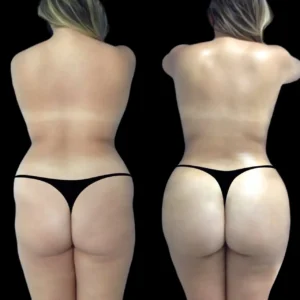
Tree pruning is more than just cutting off a few branches. It’s a vital tree care practice that promotes health, enhances aesthetics, and ensures safety. Whether you have a single ornamental tree or an entire grove, knowing how and when to prune can make all the difference.
What Is Tree Pruning?
Tree pruning in Baytown, TX involves selectively removing branches to improve the tree’s structure, direct growth, remove hazards, or enhance flowering and fruiting. It differs from trimming, which focuses primarily on aesthetics. Pruning supports long-term health, especially for younger trees in formative years.
Benefits of Tree Pruning
- Health Improvement: Removing dead or diseased branches prevents decay from spreading.
- Structural Strength: Proper pruning reduces the risk of falling limbs during storms.
- Growth Management: Controls size and shape, especially important near homes or power lines.
- Increased Sunlight & Airflow: Promotes photosynthesis and reduces risk of fungal infections.
- Enhanced Aesthetics: Maintains symmetry and encourages vibrant blooms in ornamental trees.
Best Time to Prune Trees
The timing largely depends on the species and purpose:
- Winter (Dormant Season): Ideal for most trees, especially deciduous species. Pruning in dormancy minimizes sap loss and insect infestations.
- Spring & Summer: Best for corrective pruning. Be cautious—excessive summer pruning can stress the tree.
- Fall: Generally avoided due to the risk of decay fungi that are more active in cooler, damp weather.
Common Tree Pruning Techniques
Crown Thinning
Selective removal of branches to increase light penetration and air circulation.
Crown Raising
Removal of lower branches to provide clearance for pedestrians, vehicles, or structures.
Crown Reduction
Reducing the size of the tree, useful when trees grow too close to structures or utility lines.
Dead wooding
Targeted removal of dead, dying, or broken branches.
DIY vs Professional Tree Pruning
Pruning small ornamental trees and shrubs can be a DIY task with the right tools. However, when it involves large branches, mature trees, or electrical hazards, it’s safer to hire certified arborists. Experts are trained in safe climbing, proper cuts, and assessing tree health.
Tools Required for Tree Pruning
- Hand Pruners: Best for small branches.
- Loppers: Ideal for branches up to 2 inches thick.
- Pruning Saws: Effective for medium to large limbs.
- Pole Pruners: Extend reach without a ladder.
- Chainsaws: Only for professionals or experienced users.
Always clean and sharpen tools before use to ensure clean cuts and prevent disease transmission.
Tree Pruning Mistakes to Avoid
- Topping Trees: Removing the top can permanently damage or kill a tree.
- Over-Pruning: Removing too much foliage weakens the tree and invites pests.
- Flush Cuts: Cutting too close to the trunk removes the branch collar, delaying healing.
- Wrong Timing: Pruning during active growth periods can shock the tree.
Knowing what not to do is just as important as knowing how to prune.
Safety Considerations
Tree pruning is not risk-free. Climbing trees or using sharp tools at heights poses danger. If there are electrical wires nearby, never attempt pruning without utility clearance or assistance from a professional tree service.
Importance of Hiring a Certified Arborist
Certified arborists bring experience, training, and a scientific understanding of tree biology. They follow industry standards, use proper equipment, and evaluate trees for signs of disease or decline. A professional touch ensures the longevity and beauty of your trees.
Frequently Asked Questions (FAQs)
Q1. How often should trees be pruned?
It depends on the species and location. Generally, every 2–5 years for mature trees and annually for young trees.
Q2. Can pruning harm a tree?
Yes, incorrect pruning can cause wounds, stress, and invite disease. Proper technique is essential.
Q3. Is pruning necessary for fruit trees?
Absolutely. Regular pruning encourages better fruit production, controls size, and improves sunlight exposure.
Q4. What’s the difference between pruning and trimming?
Pruning is health- and structure-focused, while trimming emphasizes shape and aesthetics.
Q5. Do all trees need pruning?
Not always. Some trees grow naturally with strong structures and only need minimal maintenance.
Conclusion
Tree pruning is essential for maintaining healthy, safe, and visually appealing landscapes. While light pruning may be manageable for homeowners, more complex jobs are best left to professionals. Understanding the purpose, techniques, and timing can help ensure your trees thrive for generations.





